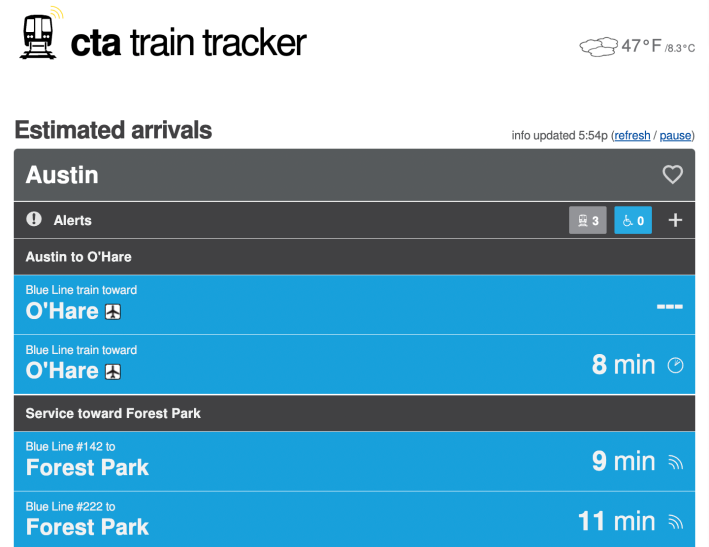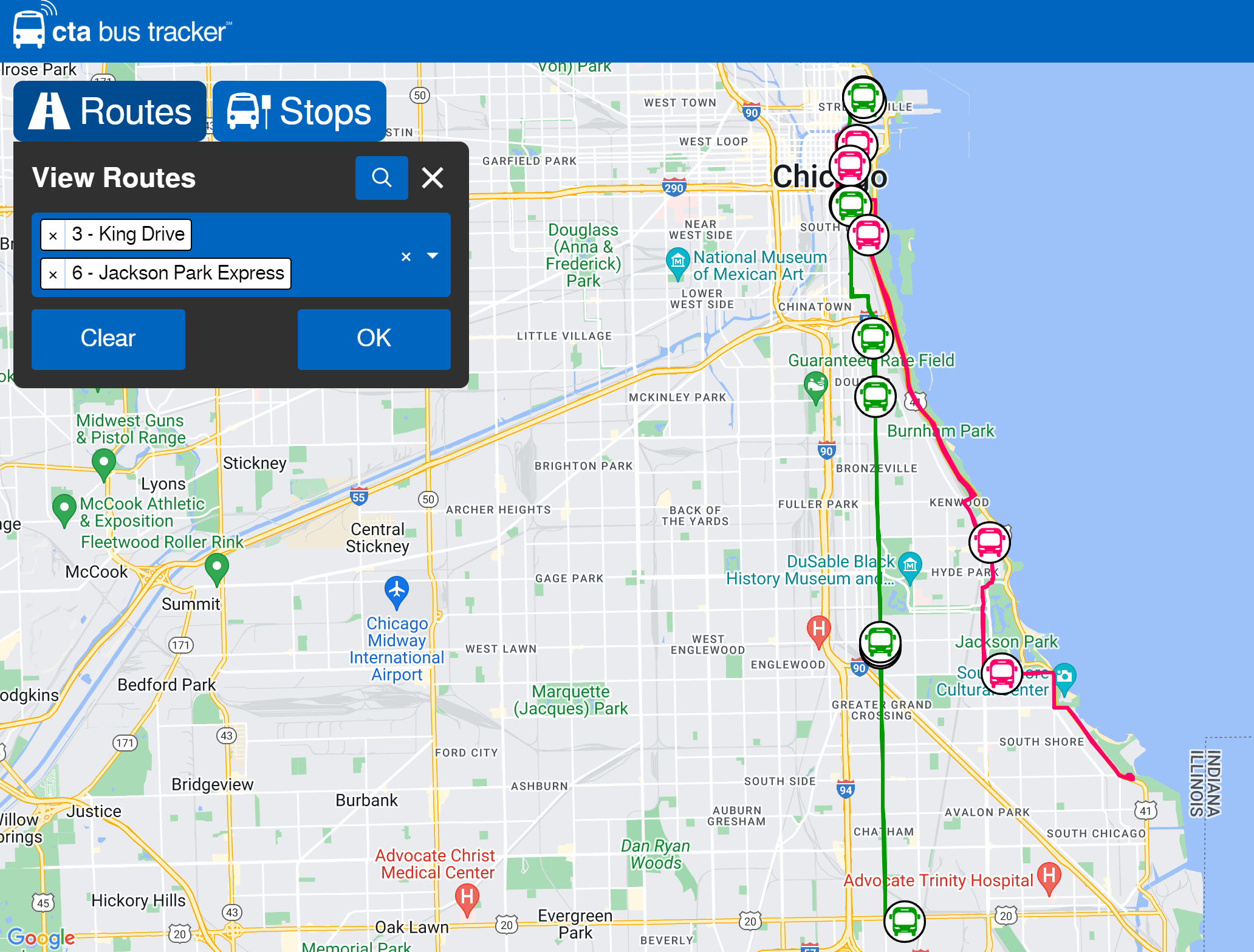At a time when CTA customers have been experiencing unreliable service and longer headways due to COVID-related labor shortages, the "ghost run" phenomenon – buses or trains showing up on Transit Tracker screens only to disappear before they arrive – has added insult to injury. In a nutshell, the CTA told Streetsblog last May this problem is due to the trackers reflecting a mix of schedule service (which often doesn't realistically reflect the number of runs that can be staffed) and real-time data.
On August 11, CTA president Dorval R. Carter Jr. unveiled a new action plan for improving service, safety, and customer experience as the system recovers from its pandemic ridership slump, titled “Meeting the Moment: Transforming CTA’s Post-Pandemic Future.” Under the “Upgrade digital tools” pillar of the plan, Carter teased that improvements to the bus and train tracker apps would be announced in the near future. The document states, “CTA will enhance bus and rail tracker feeds in coming months to improve our communication and lower the instances of ‘ghost’ buses and trains. Part of the improvement will come from service optimization efforts, but we are also making other enhancements to the tracker themselves to assist in providing customers with accurate wait times and fleet locations.” Carter showed an image of a future Train Tracker screen that suggested the new version would show the exact, real-time locations of vehicles on a map.

Today the transit agency followed through on Carter's statements, announcing the release of a newly designed website for the Bus Tracker. "Today’s upgrade creates a mobile-responsive website for CTA’s Bus Tracker, allowing customers to view bus arrival information and buses on route from their mobile devices," the agency said in a press release. "It will also provide customers with easier to access bus arrival information and more modern design, while also laying the foundation for CTA to make future upgrades over the next several months and into 2023, that will further improve the accuracy and reliability of bus arrival information."
“In this tech-centered world, CTA continues to invest in its technology and digital communication tools to ensure our customers are receiving the most accurate and up-to-date information on our service,” said Carter in a statement. “This upgrade is a critical first step in improving our rider communication tools, and a key component of our commitment to our customers to quickly address our most pressing challenges.”
According to the CTA, the updated Bus Tracker website includes the following improvements (their language):
- A new, responsive website design allows the website to adapt to whatever device being used – from smartphones to desktop monitors.
- New navigation gestures. Simply pinch to zoom in and zoom out on the map display for more detailed views and information.
- Find stops near you using your phone's GPS; the site will remember what stops you've looked up previously, and also allow you to set favorites without requiring you to create an account.
- Modernized mapping features for improved viewing of live buses across the city.
- Behind the scenes, the modern codebase will help the CTA and its vendors iterate more quickly to improve tracking and prediction accuracy.
The CTA added that the accuracy of the estimated bus arrival times will improve as the agency hires more operators, and moves forward with "service optimization efforts," adjusting published bus and train schedules to better reflect the amount of service the agency can actually provide. The latter is something Streetsblog called for two months ago. "These schedule optimizations are intended to provide more consistent and reliable service and give customers more confidence that the service they are seeing in the CTA Bus Tracker will be delivered," the CTA stated.
During the August 11 presentation, Carter said that while the schedule adjustments would mean somewhat longer – but more predictable – headways between daytime runs, midnight to 4 a.m. schedules would be unchanged, because these are the runs that are most likely to be ridden by transit-dependent essential workers.
Earlier today Kyle Lucas, cofounder of the sustainable transportation advocacy group Better Streets Chicago, asked the CTA on Twitter whether the new website will only show the arrival times for tracked buses, or will still display scheduled runs that may never materialize because there's no one available to drive the bus.
The agency responded that the both the old and new versions of the Bus Tracker website are set up to only show real-time, GPS-based arrival info. "Other websites and apps often blend real-time arrival predictions and schedule-based arrival predictions. Usually they distinguish between the two, as described here."
Lucas replied by citing the CTA's earlier statement to Streetsblog that the use of a mix of scheduled runs and real-time data was to blame for ghost buses.
Except in May you gave @streetsblogchi an entire explanation as to how you blend real-time arrival predictions and schedule-based arrival predictions on YOUR trackers and why that causes your riders to experience ghost buses and trains.https://t.co/V4aRBgmoR2
— kyle tear down that highway lucas (@itskylelucas) August 24, 2022
"Ctabustracker.com and the Bus Tracker API [Application Programming Interface, which is a software go-between that lets two applications communicate with each other] show only real-time (GPS-based) predictions," the agency responded. "The Train Tracker website, station signage, and API always show at least two predictions."

The CTA added that if there aren't two real-time predictions, it supplements the display with schedule-based data, distinguishing between real-time and schedule-based with icons on the website and signage and "isSch" in the API.
So what do you think – do the announced changes represent much of an improvement? Let us know in the comments.




